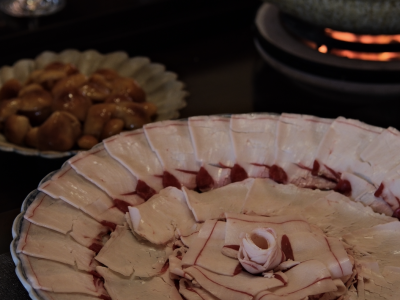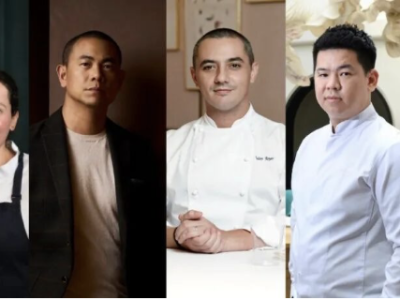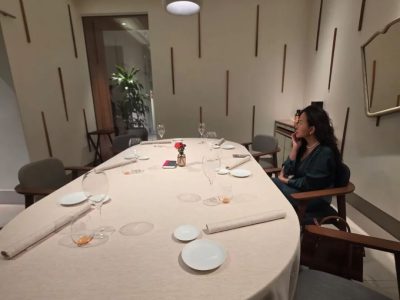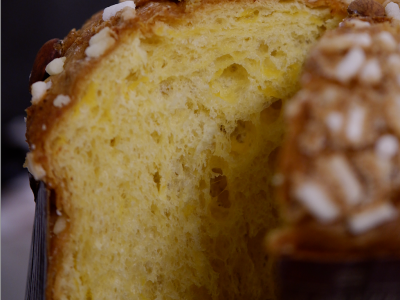Born in Osaka, the birthplace of Japanese comedy, Chef Kunihiro Hagimoto brings with him a mix of Japanese rigor and humour, as well as Italian spontaneity, and has set up his own restaurant, INITA, in Taipei. In addition to sitting in front of the counter and enjoying the food, you can also enjoy the chef's stroke-of-genius wittiness in a multi-cultural ambiance.
Kuni San's appetite for cooking increased after he watched a Japanese cooking show when he was young and he has since enjoyed cooking for his family. He spent eight years in Italy throughout his 20 years of culinary experience. I met him five years ago when I was dining at Condividere in Torino, where he was the Sous Chef of Ristorante Tokuyoshi, a Michelin one-starred restaurant. He also worked at Trattoria da Amerigo, a traditional one-star restaurant near Bologna, which I really like. As you can tell, Chef Kuni has been trained in both traditional and modern Italian cuisine. (For more information:【Bologna】Amerigo1934: Time is Everything)
In European and American cities, a restaurant with a Japanese chef in the kitchen is in almost all likelihood a good restaurant. The meticulousness in Japanese culture has become a trademark, and they don't easily settle for anything less than the best. Japanese chefs have the skills to make developments wherever they go.
INITA is a theatre-style dining concept with the chef and the cuisine being the center of the kitchen and the restaurant. Chef Kuni combines his passion for Osaka's Yoshimoto Shinkigeki with his culinary creations to make the dining experience not just delicious, but also fun. I once experienced a restaurant with similar concept in Shanghai; it was a Noh drama plus nouvelle Japanese cuisine, but the ingredients used were not up to scratch. As I expected, INITA did not let me down.
 Kuni San and Joyce@kunihirohagimoto_instagram
Kuni San and Joyce@kunihirohagimoto_instagram
INITA is a theatre-style dining concept with the chef and the cuisine being the center of the kitchen and the restaurant. Chef Kuni combines his passion for Osaka's Yoshimoto Shinkigeki with his culinary creations to make the dining experience not just delicious, but also fun. I once experienced a restaurant with similar concept in Shanghai; it was a Noh drama plus nouvelle Japanese cuisine, but the ingredients used were not up to scratch. As I expected, INITA did not let me down.
Most chefs in Taipei are trained in French cuisine, and there are not many chefs with experience in Italian cuisine. And Italian cuisine in Taipei is mostly traditional. Kuni San's cuisine offers a glimpse of modern Italian cuisine, which made me particularly excited about his restaurant. Housed in an old villa in the Songshan district, INITA features a small courtyard at the entrance facing a small park, and surrounds itself with a neighbourhood that has the feel of Japanese alleyways. The restaurant has only 12 seats at the sushi counter and a private room that caters 4 people. It's already hard to get a table now.
Chef Kuni approaches his dishes with creativity and diversity. The appetiser, Quail Tea Egg, was fried with batter on the outside but the yolk is runny inside, demonstrating the chef's precision in heat control at boiling and frying stages. After all, it's just a tiny little quail egg. The accompanying fried beef tongue was tender and juicy and served with a classic salsa verde dressing, a combination of classic Osaka kushikatsu(fried skewers), Italian flavours, and local ingredients.
The second dish has a hint of Master Tokuyoshi. Bluefin maguro was placed on a sushi rice cracker, topped with stracciatella and beefsteak tomato, combining the idea of a margherita pizza and tuna sushi. Many of these type of dishes tend to be messy and lose their focus, but INITA's version showcases the best of each ingredient without sacrificing the whole picture. It would be more accurate to describe it as a Japanese-Italian inspired dish rather than simply a fusion cuisine.
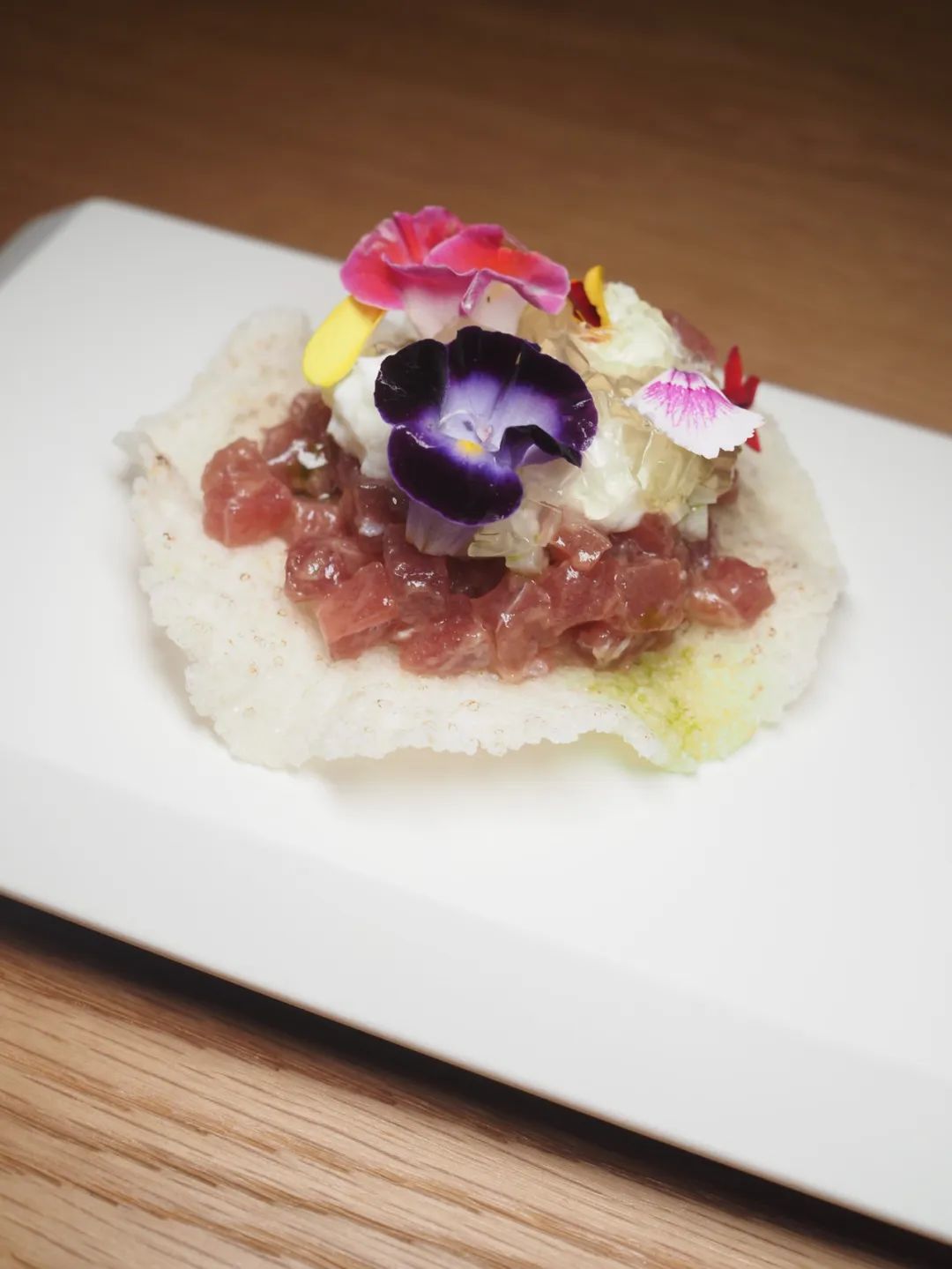 Sushi-gherita@Peray
Sushi-gherita@Peray
Dorayaki e Tartarewas a major highlight. The dish was attributed to Chef Kuni's time in Italy, where many people used to ask him to make dorayaki because of his Japanese nationality. Here in Taiwan, he has replaced red bean paste with beef tartare. It was designed to resemble Vitello tonnato, a Piemontese dish of veal covered with a creamy, tuna-flavoured sauce. Local beef from Yunlin was paired with mustardy nasturtium, red onion and capers, served on a brilliant asymmetric plate half decorated with oriental cobalt blue foliate patterns and half with colour painted figures in floral design.
Perfectly fluffy and tasty, Chef Kuni's freshly made dorayaki was truly exceptional, the best I could find in the region. I wish he'd open a Yakigashi(Japanese baked sweets)shop, actually! However, the downside of it is that the dorayaki was a bit overshadowing other parts of the dish. I believe it would still be loved by many diners, but slightly lowering the impact of dorayaki and enhancing the beef could perhaps further add to its appeal, since it's a savoury dish.
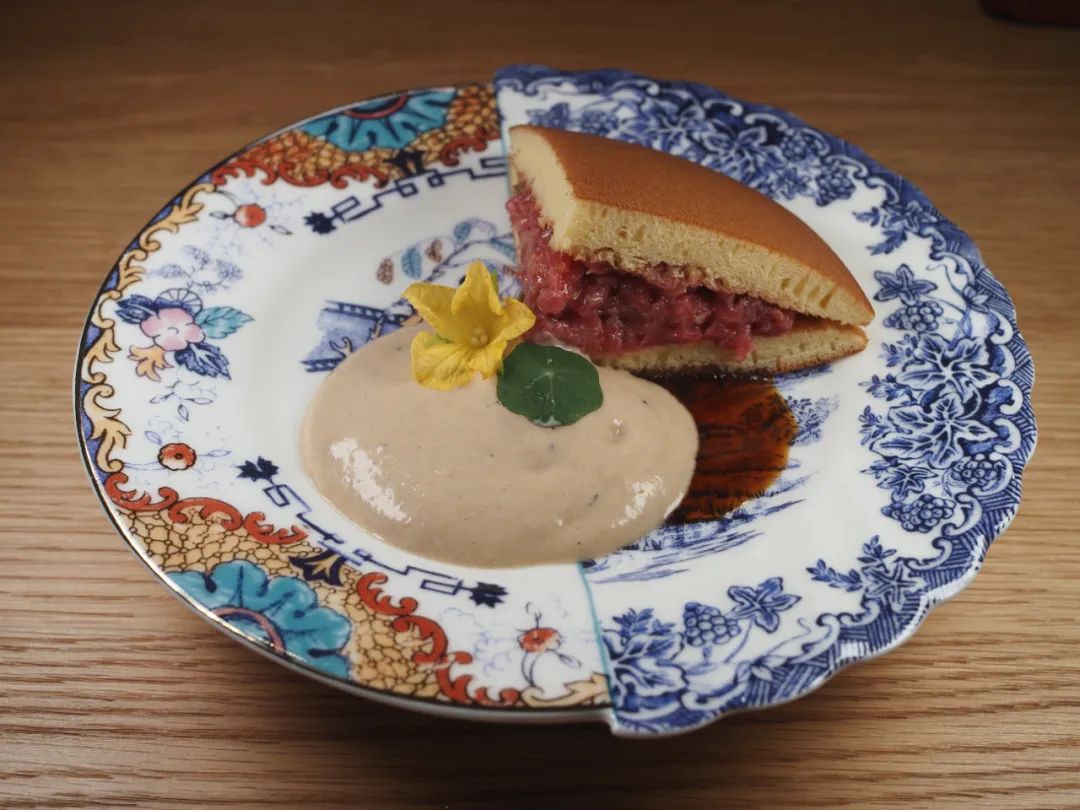 Italy Meets Japan(Dorayaki e Tartare)@Peray
Italy Meets Japan(Dorayaki e Tartare)@Peray
Next up was the ciabatta freshly made every day using sour whey and not a single drop of water. The accompanying burro nocciolato was caramelised butter mixed with Greek yoghurt for a rich smoothness and refreshing airiness. Today, more and more restaurants are serving bread as an independent course.
The first pasta dish, Born in Taiwan, featured freshly made ravioli filled with homemade Italian pomodori pelati, egg yolk and shrimp. The bisque di gamberi was presented in a thick layer of orange-coloured foam to resemble a classic Chinese dish – Tomato and Scrambled Eggs. When I cut open an al dente ravioli, a stream of golden yellow, thick and creamy egg yolk oozed out all over. Through this dish, Chef Kuni has completed a beautiful deconstruction of three elements: tomato, shrimp and egg. Deceptively simple but with complexity, this was my favourite dish of that day.
The octopus was cooked in a very Italian way, but combined with local ingredients such as Matsu red koji and lotus root is accompanied by a comedic presentation. Chef Kuni designed a pairing comedy before the dish was served – not the funniest joke but it's guaranteed to make you laugh!
Another main course, Ancora, Ciao Formosa, was comprised of cherry duck, aigamo rice (local organic rice grown in a symbiotic system with farm duck), and a sauce made from sweet potato leaf and germ rice. This dish was very pleasing to the eye, but the duck skin could have been cooked more thoroughly, which is a pity.
The final pasta dish was a handmade tagliatelle in Bolognese ragu. The ragu was made from local beef and Jinhua ham instead of the Prosciutto Crudo, served in a Japanese rice bowl, which you can refill for another bowl. Thanks to Chef Kuni’s experience working at the famous restaurant Amerigo near Bologna, the flavours of the pasta were spot on, living up to his Italian uncle's reputation. It may sound fussy for me to say this, but it would be really great if I could be offered to choose between different portions of the dish before served. Because that prevents the pasta from sitting in the cooking vessel for too long and reducing its al dente texture.
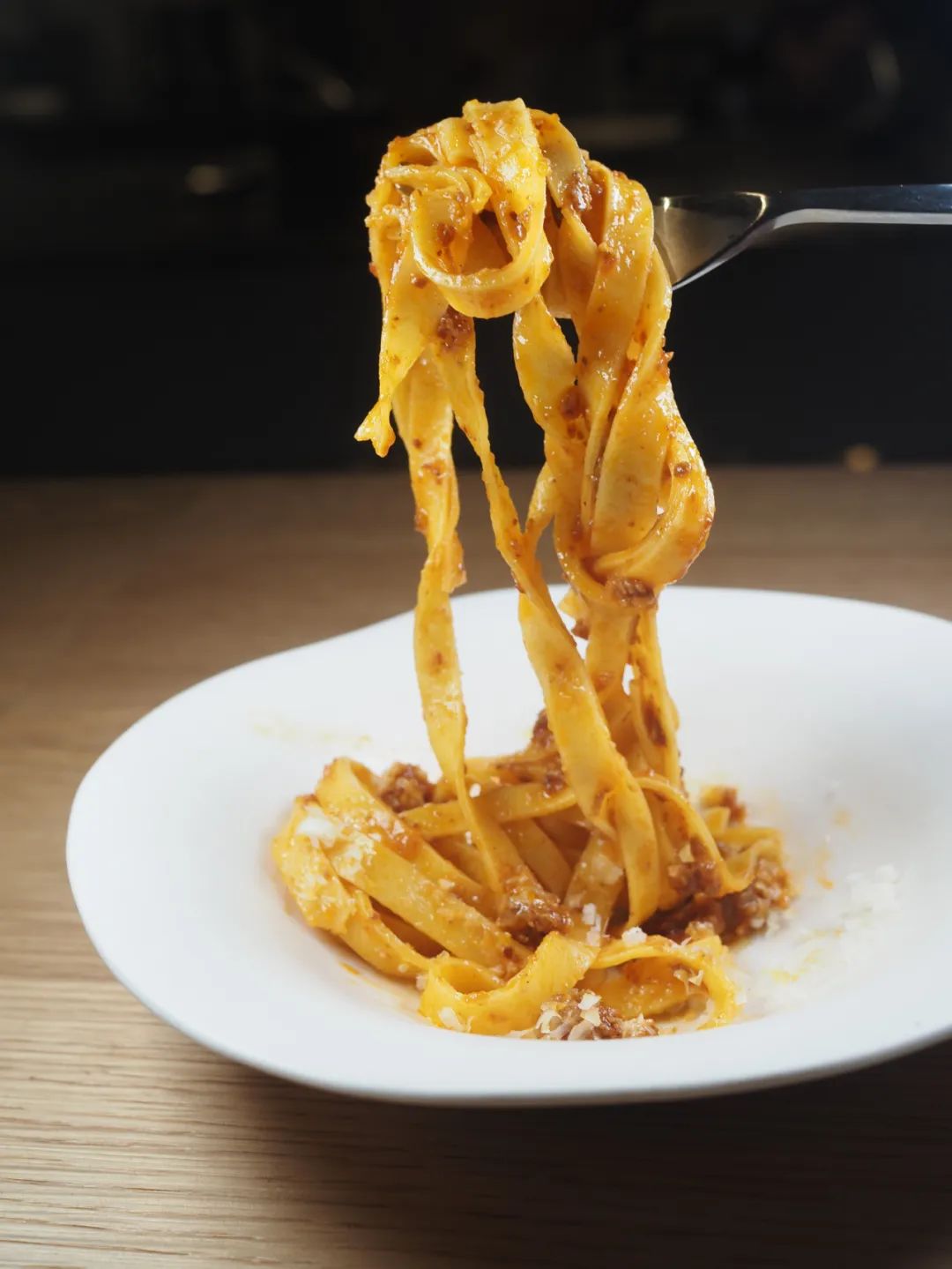 Ancora, Ciao Formosa(Cheery Duck with Aigamo Rice)/Tagliatelle Al Ragù Bolognese@Peray
Ancora, Ciao Formosa(Cheery Duck with Aigamo Rice)/Tagliatelle Al Ragù Bolognese@Peray
In Italy, pasta is usually served before the main course. INITA has adjusted the order of serving pastas to suit Asian people's dining habits.
The dessert Newton's Apple took inspiration from the great scientist's "acceleration of gravity". Diners are given a brandy filled wine glass with a root-like foot and they can drop the mini “apple” right into the glass, breaking the translucent sugar sheet placed on the rim of the glass. It's a refreshing dessert with a multi-faceted texture and a fun process that takes you back to a playful childhood.
TiraMiso is a dessert that combines tiramisu and miso, with ingredients including mascarpone cheese, Sanxing scallion and seaweed. It was both savoury and sweet, with a hint of toasty miso. And the name is just one letter different from Tiramisu!
The closing dessert was a timeless Italian egg yolk gelato, coupled with Biscotti di Parmigiano Reggiano and 25-year Aceto Balsamico Tradizionale DOP, a nostalgia of the Emilia-Romagna region that belongs to Chef Kuni.
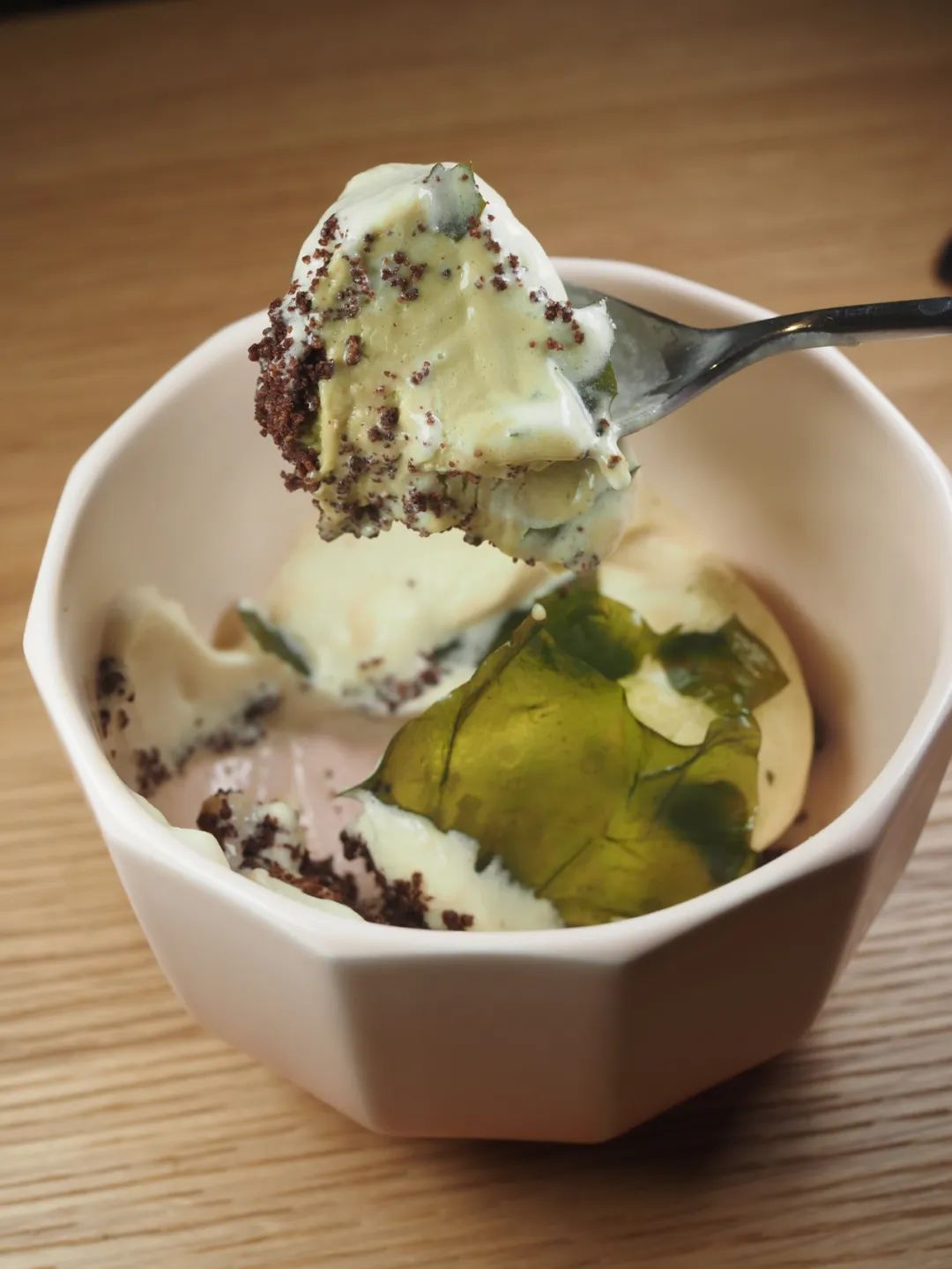 TiraMiso@Peray
TiraMiso@Peray
INITA offers authentic cuisine with a bonus of Japanese comedy. Ingredients like bluefin tuna, local beef, stracciatella and 25-year balsamic vinegar are all excellent choices. With experimental spirits and solid skills, Chef Kuni is bringing immense possibilities to his efforts in menu design.
INITA has the warm and welcoming atmosphere of a husband-and-wife restaurant, reminding me of DEN in Tokyo. Some carb-conscious diners might be alert but in Italy pastas are often the highlight, and it's not unusual to have more than two pasta courses on a set menu. INITA's fun dining is the realisation of a dream to invigorate dining with a sense of excitement. You will dine around chef's lively dishes and share in the experience that has shaped these brilliant, dynamic delicacies.
There are not many Italian restaurants in Taipei that offer set menus only, so whether or not INITA gets a star depends on how Michelin inspectors understand Italian cuisine. In my opinion, INITA is very much likely to be crowned a Michelin star.
Author: Jocelyn 华姐
Photo: Peray/instagram


